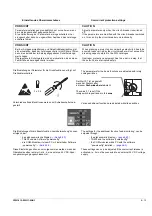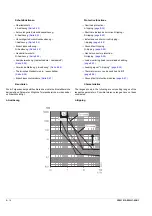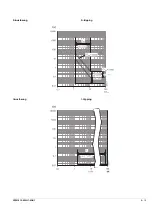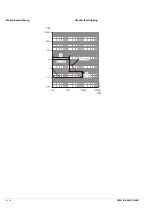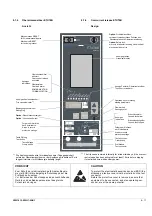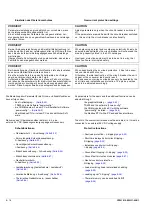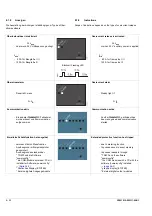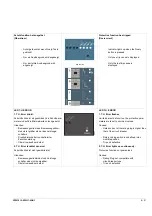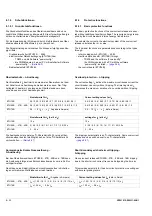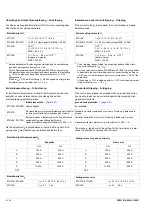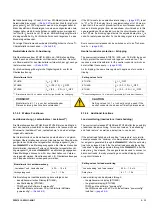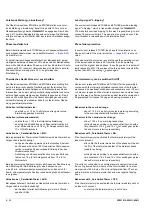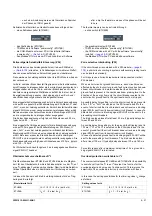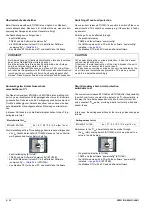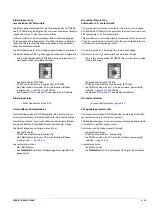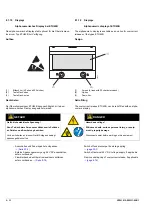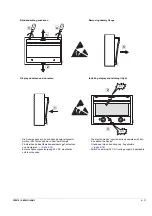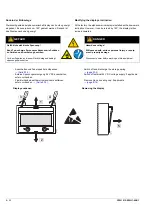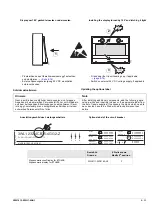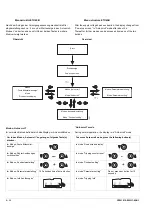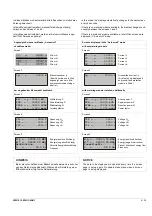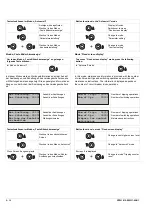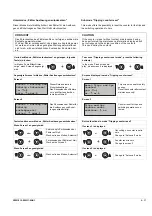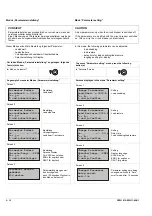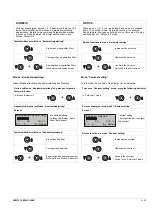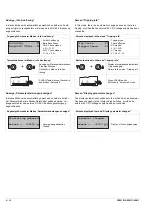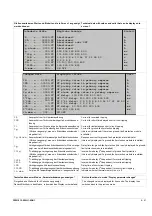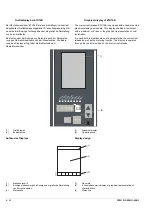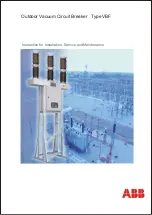
3ZW1012-0WL11-0AB1
8 – 27
- nach einer Auslösung werden die thermischen Speicher
der Phasen auf NULL gesetzt
Aktivieren des thermischen Gedächtnisses kann erfolgen über:
- einen Schiebeschalter (ETU45B)
- das Grafikdisplay (ETU76B)
- TD400und die Software "powerconfig" (ETU76B)
- die COM-Module mit einem PC mit installierter Software
„powerconfig“
(ETU76B).
- den Modbus RTU mit einem PC und zusätzlicher Software
Zeitverzögerte Selektivitäts-Steuerung (ZSI)
Die Kombination des Leistungsschalters mit einem ZSI-Modul
erlaubt es, in Schaltanlagen mit mehreren Staffel-
ebenen einen auftretenden Kurzschluss genau zu lokalisieren.
Dazu werden alle Leistungsschalter über ihre ZSI-Module miteinan-
der verbunden.
Im Kurz- und/oder Erdschlussfall fragt jeder vom Kurzschlussstrom
durchflossene Leistungsschalter die ihm direkt nachgeordneten Lei-
stungsschalter ab, ob der Kurz- und/oder Erdschluss auch in der
nächsten untergeordneten Staffelebene auftritt. Es löst nur der, in
Energieflussrichtung gesehen, nächstgelegene, dem Kurz- und/
oder Erdschluss vorgeordnete Leistungsschalter aus.
Eine eingestellte Verzögerungszeit t
sd
für die Kurzschlussauslösung
wird auf 50 ms gesetzt bei Schalterstellung am ZSI-Modul „S“ oder
„S+G“, wenn der Leistungsschalter im Kurzschlussfall kein Blockier-
signal ZSI-IN von einem nachgeordneten Leistungsschalter erhält.
Bei einem erkannten Kurzschluss wird ein Blockiersignal ZSI-OUT
an die vorgeordneten Leistungsschalter ausgegeben.
Die Kurzschlussauslösung erfolgt jedoch frühestens nach 50 ms,
typisch sind 80 … 90 ms.
Eine eingestellte Verzögerungszeit t
g
für die Erdschlussauslösung
wird auf 100 ms gesetzt bei Schalterstellung am ZSI-Modul „G“
oder „S+G“, wenn der Leistungsschalter im Erdschlussfall kein
Blockiersignal ZSI-IN von einem nachgeordneten Leistungsschalter
erhält. Bei einem erkannten Erdschluss wird ein Blockiersignal
ZSI-OUT an die vorgeordneten Leistungsschalter ausgegeben. Die
Erschlussauslösung erfolgt jedoch frühestens nach 100 ms, typisch
sind 130 ... 140 ms.
Zur Sicherheit wird nach längstens 3 s ein ausgegebenes Blockier-
signal ZSI-OUT beendet.
Überlastschutz umschaltbar auf I
4
t
Die Überstromauslöser ETU45B und ETU76B bieten die Möglich-
keit, für den Überlastschutz mittels Schiebeschalter von der I
2
t- auf
eine I
4
t-abhängige Funktion umzuschalten. Damit wird die Selektivi-
tät des Überlastschutzes in Kombination mit Sicherungen verbes-
sert.
In diesem Fall ändern sich die Einstellmöglichkeiten für den Träg-
heitsgrad t
R
wie folgt:
Einstellwerte für t
R
ETU45B
t
R
= 1 / 2 / 3 / 4 / 5 s
(bei 6 x I
R
)
ETU76B
t
R
= 1 ...5 s
(bei 6 x I
R
)
- after a trip the thermal memories of the phases will be set
to zero
The thermal memory can be activated through:
- a slide switch (ETU45B)
- the graphical display (ETU76B)
- TD400 and the software "powerconfig" (ETU76B)
- the COM modules with a PC with the software “powerconfig”
installed
(ETU76B).
- the Modbus RTU with a PC and additional software
Zone selective interlocking (ZSI)
If the circuit breaker is combined with a ZSI-module
, a short-circuit occurring in systems with several grading levels
can be localised precisely.
For this purpose, all circuit breakers are interconnected via their
ZSI-modules.
When a short-circuit or ground-fault occurs, each circuit breaker
affected by the short-circuit or ground-fault current queries its down-
stream circuit breaker to determine whether the short-circuit or
ground-fault is present in the next downstream grading level. In the
direction of the energy flow, only the circuit breaker nearest to the
short-circuit or ground-fault in the upstream direction is tripped.
A possible delay time setting t
sd
for the short-circuit tripping is set to
50 ms if "S" or "S+G" is selected on the ZSI module and if in the
event of short-circuit the circuit breaker does not receive a blocking
signal ZSI-IN sent from its downstream circuit breaker. In case of a
detected short-circuit a blocking signal ZSI-OUT will be sent to the
preceeding circuit breakers.
The trip does take place after at least 50 ms. It typically delays be-
tween 80 and 90 ms.
A possible delay time setting t
g
for the ground-fault tripping is set to
100 ms if "G" or "S+G" is selected on the ZSI module and if in the
event of ground-fault the circuit breaker does not receive a blocking
signal ZSI-IN sent from its downstream circuit breaker.
In case of a detected ground-fault a blocking signal ZSI-OUT will be
sent to the preceeding circuit breakers. The trip does take place
after at least 100 ms. It typically delays between 130 and 140 ms.
For safety reason after a maximum delay time of 3 s a given bloc-
king signal ZSI-OUT is terminated.
Overload protection switchable to I
4
t
The overcurrent releases ETU 45B and ETU76B offer the possibility
to switch over from the I
2
t to an I
4
t inverse-time function for the
overload protection by means of a slide switch. This improves the
selectivity of the overload protection in combination with fuses.
In this case, the setting possibilities for the time-lag class t
R
change
as follows:
Setting values for t
R
ETU45B
t
R
= 1 / 2 / 3 / 4 / 5 s
(at 6 x I
R
)
ETU76B
t
R
= 1 ... 5 s
(at 6 x I
R
)
Summary of Contents for 3ZW1012-0WL11-0AB1
Page 15: ...3ZW1012 0WL11 0AB1 0 XV ...
Page 87: ...3ZW1012 0WL11 0AB1 8 15 S Auslösung I Auslösung S tripping I tripping ...
Page 88: ...8 16 3ZW1012 0WL11 0AB1 Erdschlussauslösung Ground fault tripping ...
Page 359: ...3ZW1012 0WL11 0AB1 27 5 ...
Page 360: ...27 6 3ZW1012 0WL11 0AB1 ...
Page 366: ......
Page 367: ......

